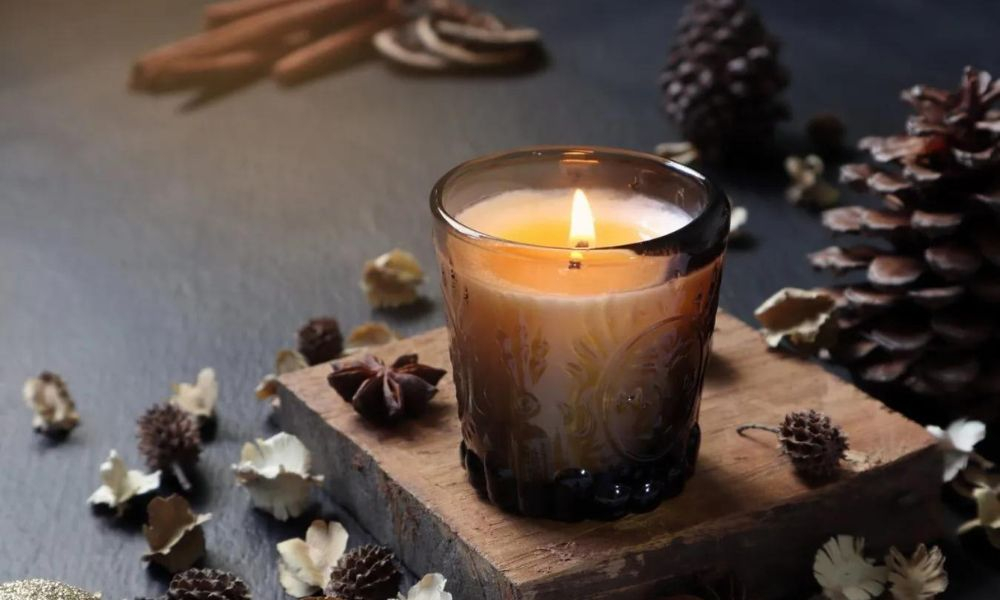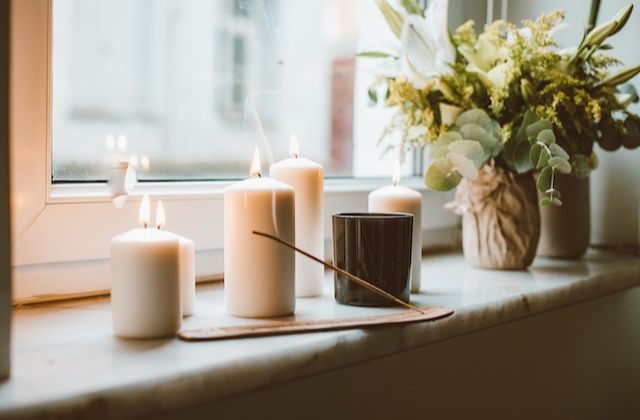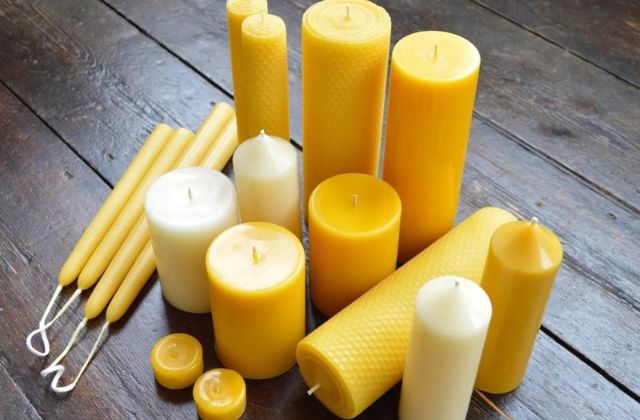
Are scented candles bad for you? Which wax is the less harmful, find out more
22 october 2022It has always been a never-ending debate whether candles are good or bad. Besides being something associated with fire, there are other wax and wanes to it. Long ago, people merely relied on candles as a source of light.
But now, they are developing as decorative rather than necessities with changing times. They are used in ceremonies, and recently scented candles have been in the limelight. The smell of a scented candle can be very therapeutic, but the chemicals they contain may not be.
Following is an insight into our scented candles that are bad for you or can be enjoyed without worrying.
Are Candles Scent Bad for You?
You won't find a conclusive answer to this question as it depends on several factors. The type of candle, the ingredients, and how often you burn them - all matter. There are some potential risks associated with burning candles. The most important one is not leaving them unattended.

Exposure to burning candles can result in various health issues. And those who are already suffering from respiratory diseases are more at risk. Using natural and synthetic chemicals also influence the quality of the candle.
Limiting your exposure to candles is best, and only burning them when necessary. If you choose to burn candles, be sure to do so in an open area and never leave them unattended.
Can Scented Candles Be Toxic?
These candles are a popular way to make a home smell nice, but there is some concern that they may be toxic. The main concern is the fumes from the candles, which can contain harmful chemicals. Some studies show that they release harmful chemicals like benzene and toluene into the air. These can cause health issues like headaches, dizziness, and respiratory problems.
There are ways to minimize the after-effects of burning a candle:
1- Make sure to choose candles with natural and non-toxic materials.
2- Don't burn candles for more than a few hours.
3- Keep candles away from children and pets.
Watch the Wick, Smoke, and Soot
Besides the wax, a candle's other most important component is the wick. Wicks can be of different materials, affecting how much fuel is drawn to the flame (also check the most realistic flameless candles). It also determines the production of smoke and soot.
Some wicks allow large amounts of fuel to draw up at once. At the same time, some have smaller streams of fuel going to the flame. The heat from the flame liquifies wax breaking down the hydrocarbons.
When the chemical reaction responsible for producing the flame in a candle disrupts, it releases smoke. This smoke contains unburnt carbon atoms. The steam containing these atoms then rises and appears as black smoke or candle soot.
The material of the wick, its diameter, and even the tightness of its braiding matter. If a candle is emitting black smoke or soot, you can do the following:
- Extinguish the candle
- Trim the wick to 1/4 of an inch
- Make sure the candle is on a flat surface.
- The candle should be in a draft-free area.
These methods prevent soot and black smoke. Make sure that the candle burns in a well-ventilated room. Many candles release some amount of smoke due to the quality or the type of wax.
What about the Type of Wax?
Several types of wax are available, including natural, synthetic, and blends. Each type of wax has its unique qualities.
Paraffin Wax
It is the most popular wax for candles, but not everyone is on board with it. Paraffin wax is a product of crude oil enhancement, and because of this, some people choose to avoid it. Besides the environmental reasons, it has a short burning time.
Pros:
- It can hold more fragrance
- Can easily mold
- Readily available
Cons
- It is not eco-friendly.
Soy Wax
There are many different types of soy waxes available on the market. They come in various merges and melting points. Many soy waxes are made of soybean oil, while some have different oils to create diverse effects.
Pros
- Eco-friendly
- Slower burning
- High melting point
- Soft and malleable
Cons
- Expensive (also check the most expensive candles)
Gel Wax
When talking about these candles, we cannot ignore gel wax. Gel wax is an amalgamation of mineral oil and resin. It is quite identical to other waxes in aroma and color and melts and burns. The difference is in the transparency, which the other waxes cannot provide.
Pros
- Readily available
- Best for decorative candle making
- Hold the fragrance well.
Cons
- Short burn time
- Highly flammable
Beeswax
Beeswax is one of the oldest providers of candle wax. But since the wax infuses with honey, it has a natural honey fragrance. After harvesting from the hive, the wax is processed for candle making.
Pros:
- Eco-friendly and sustainable
- Purify the air
Cons:
- Not suitable for scented candles

Coconut Wax
Coconut wax is a wax made from coconuts. They make an excellent substitute for paraffin wax to create blends. They burn clean and longer without giving off much smoke and soot.
Pros
- Can hold colors well
- Eco-friendly
- Holds the fragrance well.
Cons
- Expensive
With the given information, Paraffin wax seems to rule the candle world. But for scented candles usually, soy wax is better because of its benefits.
Synthetic vs. Natural Fragrances
Whenever we say synthetic, it spontaneously triggers an adverse belief. And simultaneously, nature is sustainable and harmless.
It is not always possible to attain the natural scent one desires. In this case, the synthetic ones are viable. The greatest of fragrances are a blend of natural and synthetic notes.
The cost of extraction and the availability of the raw material is an issue with natural fragrances. In contrast, synthetic fragrances are easy to develop inside a laboratory.
Using a natural fragrance in a candle means less air pollution. But natural fragrances might not be able to give you what you are looking for. However, synthetic scents can provide similar natural scents without messing with nature.
Moreover, recent advancements have made synthetic fragrances more sustainable and practical.
How to Safely Burn Candles
- Always trim the wicks to ¼ of an inch before lighting
- Ensure the candle is at least 2 feet away from any item that can catch fire.
- Never leave a candle unattended, especially if you have kids and pets.
- Do not burn a candle for more than 4 hours.
- Make sure there aren't any drafts or air blowing at the candle.
- Do not leave the candle lit before going to bed.
- Always ensure that you follow the safety instructions.
Pros and Cons of Scented Candles
Pros:
- Can calm your mood by inhibiting the production of hormones.
- Help relieve stress by creating a lovely ambiance.
- Some scents can help keep the bugs away and make your home smell pleasant.
- Some fragrances can stimulate the mind and increase concentration.
Cons
- Burn in a well-ventilated place; otherwise, the smoke can cause health issues.
- It holds the same hazards as any open flame.
Are Candles Bad For The Environment?
Candles might make your home look and smell great, but they come at an environmental cost. Traditional candles have petroleum-based paraffin wax emitting harmful greenhouse gases. Plus, the different added fragrances can be hundreds of unsustainable chemicals.
While all candles will have some ecological impact, if you're still set on buying and burning them, try opting for ones made of soy or local beeswax. Additionally, ensure the jar it comes in is glass, and the wick is made of organic cotton. We can help reduce their negative environmental impact by making more eco-conscious choices.
FAQs
Are scented candles worse than smoking?
They may not be worse than smoking; however, Paraffin wax in its crude form emits smoke and soot with traces of zinc, tin, and lead. The smoke from burning a paraffin wax candle for one hour is almost equivalent to smoking a cigarette.
Are candles bad for your lungs?
Candles may not be as bad for your lungs as they are portrayed. However, the burning of Paraffin wax poses the most threat. They are a petroleum by-product. Hence they release harmful soot.
Are Bath & Body Works candles toxic?
Bath & Body Works candles, or any candles for that matter, will work best if you follow the instructions (check 8 Great bathroom candles scent). Bath & Body Works scented candles are safe when following the label's directions. They are put through fine quality and safety testing.
Where does the wax go when you burn a candle?
The act of combustion is what we refer to when a candle is burned. The heat melts the wax, and as it becomes liquid, it gets soaked in the wick. The wick burns the wax by combining the hydrocarbons with oxygen. The result is tiny droplets of water and carbon dioxide in the air.
Our Take on Scented Candles
There is no direct evidence linking candle smoke to any harmful health conditions. Yet it's important to be cautious when burning candles indoors.
Inhaling any smoke can be unhealthy for the human body, even for a short duration. And things may start to get worse if you already have asthma. Hence it's best to burn candles in a ventilated room or outdoors. Keeping your candles away from drafts can also help decrease the smoke they produce.


